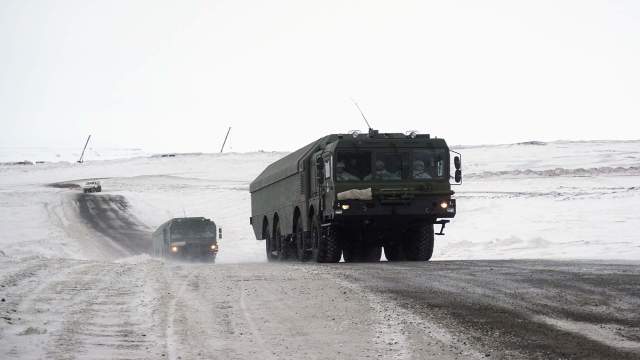Izvestia learned about the Navy's new capabilities to counter the forces of the alliance
Russia is making efforts to counter the activity of NATO forces in the Arctic. By 2027, the Russian Defense Ministry plans to increase the continuous radar control zone in the region several times, Navy Commander Nikolai Evmenov said at the Arctic: Present and Future forum. According to him, the Northern Fleet is also waiting for a large-scale reinforcement. It may also be about Russia's withdrawal from the UN Convention on the Law of the Sea, which limits its full control to only a 12-mile zone of territorial waters, representatives of the State Duma said. Izvestia's sources spoke about the active development of dual-use infrastructure in the region. All this is in our material from the international forum.
They laid a mine
Year—round navigation along the Northern Sea Route, coverage of the entire Arctic zone with stable communications and full radar control of the movements of sea and air objects are the three main tasks that our state has to solve in order to protect its military and economic interests in the Arctic and maintain its leading positions in the region. This opinion was expressed by experts interviewed by Izvestia during the international forum: "The Arctic: present and future."
The shortest route along the Northern Sea Route from Asia to Europe and the huge hydrocarbon reserves in the region are of interest not only to the Russian economy. Unfriendly states, primarily the United States, consider the Russian segment of the Arctic to be a common asset and are actively increasing their military presence in the region, the interlocutors of the publication stressed.
The essence of the political differences between Russia and NATO countries lies around understanding the status of the Northern Sea Route and maritime borders in the region. In 1982, the UN adopted the Convention on the Law of the Sea, which defined the concept of a 12-mile zone of territorial waters, where the state has the right to establish its own laws.
The specifics of the legal status of the Arctic and the Northern Sea Route are not spelled out separately in the convention, the section on "ice-covered areas" consists of only one general article, which speaks about the need to take care of the environment. Therefore, the USSR, which historically adhered to a sectoral approach to defining borders in the Arctic, did not join this convention and considered the entire Arctic space from the Barents to the Chukchi Seas to be its own territory.
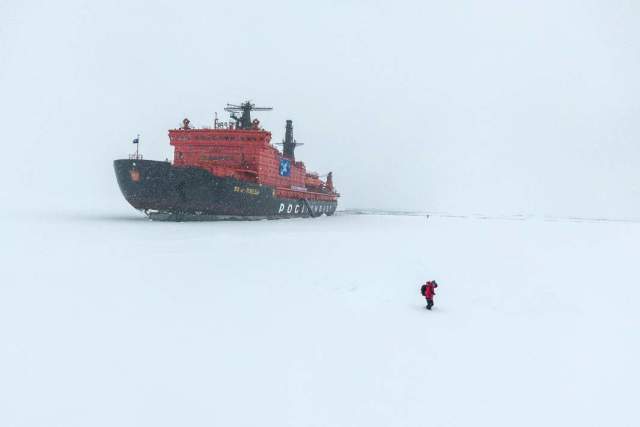
Photo: IZVESTIA/Pavel Volkov
Image source: iz.ru
The situation changed in 1997, when Russia ratified the convention, agreeing that foreign ships (as well as aircraft and submarines) can be in the Arctic without permission or even notification from our side (with the exception of that very 12-mile zone). And already in the 21st century, with the development of technology, the growth of the Arctic shelf development and the active melting of ice in the region, it became possible to work almost year-round, and the Northern Sea Route began to be considered as a real alternative to existing maritime transport corridors from Asia to Europe.
— Until the Americans came up with this convention in 1982, the entire Arctic was divided into sectors. There are only five Arctic states: Russia, Denmark, Norway, Canada, and the USA. But the Americans were not satisfied with this, it turned out that Russia has more than 60% of the territory of the Arctic coast, and they have only 7%. They came up with this convention, we foolishly ratified it, we got into trouble. Of course, it is necessary to raise the question that we are withdrawing from the convention, because the Northern Sea Route is our internal transport artery. Since 2012, we have consolidated this with several presidential decrees, but the Americans do not agree with this," Vice Admiral Anatoly Shevchenko, adviser to the Deputy Commander—in-Chief of the Russian Navy on Arctic issues, told Izvestia.
After the serious deterioration of Russia's relations with NATO countries, our state's participation in the convention has become a time bomb. NATO ships and aircraft are actively operating in the Russian segment of the Arctic without notification, without crossing, according to the convention, the 12-mile zone of territorial waters, but at the same time conducting active reconnaissance activities.
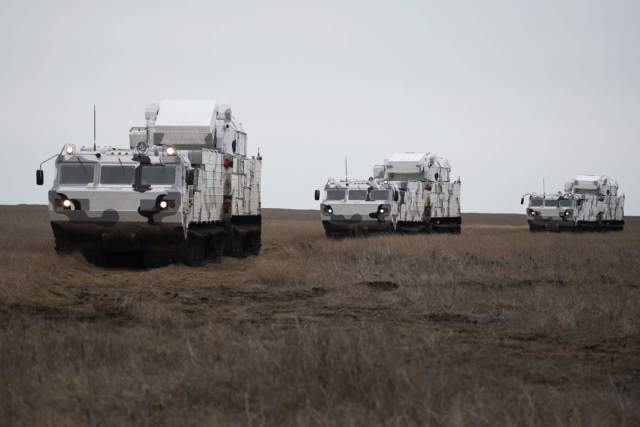
Arctic anti-aircraft missile defense systems "Tor-M2DT"
Image source: Photo: RIA Novosti/Vitaly Timkiv
A senior interlocutor of Izvestia in the Russian Defense Ministry told about the latest "egregious case" when this summer an American military icebreaker entered the Chukchi Sea, approached the Russian shores, and when asked by the Russian side about the nature of its actions, he said that he was "counting fish."
In the near future, the relevant committees of the State Duma will discuss the issue of denunciation of the convention and put it on the agenda, MP Nikolai Novichok told Izvestia.
— Taking into account the fact that after the adoption of amendments to the Constitution in 2020, we put national law above international law, no one prevents us from ignoring this requirement (the UN Convention on the 12-mile zone of Territorial Waters. — Izvestia) already now, — he noted.
They will ask for permission
In order for foreign countries to strictly comply with the requirements of Russian legislation in the Arctic, they must understand that our state has the determination and means to introduce a permit system for passage along the Northern Sea Route, Anatoly Shevchenko believes.
— What is the permissive passage system? This means that we must have the forces and means, ships, aircraft, so that our "guests" ask permission to pass along the Northern Sea Route, realizing that otherwise they may be forced out or detained," he told Izvestia.
According to him, much of what the Ministry of Defense is doing in the Arctic cannot be said for reasons of secrecy, but the military component in the region is developing synchronously with the civilian development of the Northern Sea Route, along which year-round traffic is planned to open in 2024 for the first time in the history of Arctic exploration.
Admiral Nikolai Evmenov, Commander-in-Chief of the Russian Navy, spoke about the threats to the Russian Arctic from NATO and ways to contain the alliance in his speech at the forum. He said that recently there has been a 20 percent increase in the military presence of NATO forces in the region. And he said that the Russian Defense Ministry plans to increase the continuous radar control zone in the Arctic several times by 2027 — up to 3.2 million square kilometers.
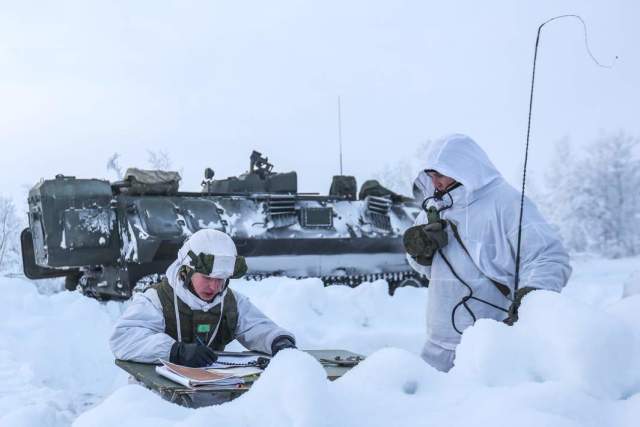
Marines of the Northern Fleet
Image source: Photo: RIA Novosti/ Pavel Lvov
Answering a question from Izvestia about the change in the staffing structure of the Northern Fleet, which lost the status of an operational strategic command this year, Nikolai Evmenov said that the new structure of the fleet forces would increase the speed of response to threats, and the forces of the SF would receive a large-scale reinforcement.
An informed Izvestia source in the law enforcement agencies said that Russia, like NATO, is actively developing dual-use infrastructure in the region.
— For example, we can equip a simulated icebreaker with attack drones and even shock missile weapons. During normal times, the vessel will perform its tasks of ice navigation along the Northern Sea Route, and during the threatened period it will become a warship of the Northern Fleet in order to carry out tasks to deter a likely enemy. The same applies to rescue and supply bases, observation posts, airfields. In the Arctic, military and civilian infrastructure complement each other, it has been so historically, and it will continue to be so," the source told Izvestia.
The forum also learned about the details of a large-scale Arctic shipbuilding program in the interests of the Russian Maritime Rescue Service (FSBI "Marine Rescue Service"). The Agency plans to accept 10 new icebreaker-class vessels in 2024, which will increase the safety of navigation in the region. This was told by the deputy head of the "Marine Rescue Service" Alexander Naumenko. Among them is a multifunctional rescue vessel of the IBSV02 project with a capacity of 18 MW, Icebreaker 7 class, capable of performing a full range of tasks in the Arctic region.
The construction of the vessel is being completed at the Turkish shipyard Sefine Shipyard, its cost is about 13 billion rubles. Length 118 m, width 26 m, draft 18 m. The contractor classifies the vessel as a supply icebreaker, however, an informed interlocutor of Izvestia in the industry spoke about the special capabilities of the new icebreaker.
— According to its characteristics, the presence of hangars, this vessel is capable of carrying not only rescue helicopters, but also unmanned vehicles of various types and ranges. At our factories, after the ship is handed over by the Turks, the icebreaker can receive special equipment to perform tasks under water not only of a rescue nature. And its ice class will allow you to work in high latitudes all year round," explained the source of Izvestia.
In total, by 2034, the Marine Rescue Service plans to put into operation 54 modern icebreaking vessels in the region.
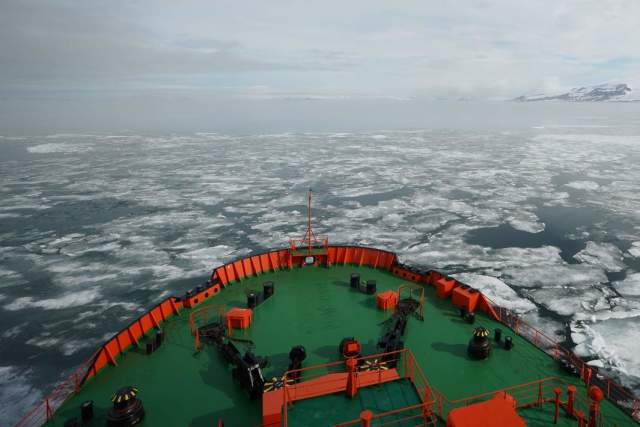
Photo: IZVESTIA/Pavel Volkov
Image source: iz.ru
We also talked at the forum about the unresolved security problems in the Arctic. For example, Russia still does not have a satellite constellation that allows continuous monitoring and provides Russian specialists with stable and secure communications, including Internet access. Not only commercial, but also government organizations are forced to buy data transmission services and satellite images from foreign suppliers.
One of the specialized enterprises of the Rostec state Corporation has a project to provide a stable connection to the Russian segment of the Arctic, but it has not yet received state support. Meanwhile, Elon Musk has already announced that he plans to completely cover the Arctic with the Internet using his Starlink system, the supply of services to Russian users is prohibited.
Andrey Krasnobaev
